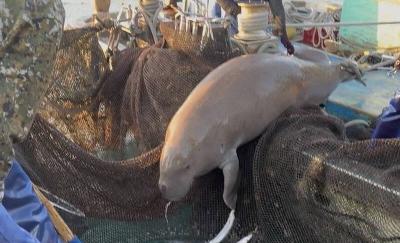A new study of Taiwan’s maritime security calls on the US to support the nation’s military modernization and help it interact with the armed forces of other friendly nations.
“Taiwan’s security is inextricably linked to the sea,” said Dean Cheng (成斌), research fellow in the Asian Studies Center at the Washington-based Heritage Foundation.
“The nation’s economic livelihood, as well as its national security, requires that Taipei secure the surrounding waters and have access to global sea-lanes,” he wrote in the 14-page paper published this week.
Cheng argues that Taiwan occupies a key position in the so-called “first island chain” that separates China from the open Pacific Ocean and serves as an essential “cork in the bottle” limiting the Chinese navy and air force from reaching into the central Pacific. He urges the US to sell Taiwan modern warships as they are retired from the US Navy. In particular he calls for the sale of Spruance-class destroyers and early versions of the Aegis cruiser to improve Taiwan’s seagoing air-defense capabilities.
Cheng also called for the US to complete its review of Taiwan’s request for a submarine design phase in a weapons procurement plan and allow the program to proceed. Alternatively, he said, US contractors should be allowed to explore direct commercial sales of submarines to Taiwan.
“Isolation is one of the greatest problems confronting Taiwan’s military,” Cheng said. “Due to Chinese pressure, the Republic of China [ROC] military has only limited interaction with foreign militaries... It not only lacks combat experience, but also has not enjoyed the cross-fertilization opportunities typical of other US allies,” he said.
“The US should serve as a bridge for the Taiwan military to interact with foreign military forces,” he adds.
Should Beijing mount an invasion of Taiwan, the initial assault would depend on its navy’s amphibious assets, Cheng said. However, at this time, China has only one large landing ship dock, about 100 medium landing ships and a small number of air-cushion vehicles, Cheng said. Its huge merchant and fishing fleets would only be of real use once a beachhead had been established.
“Thus, at least in the short term, China’s ability to launch an amphibious assault against Taiwan remains limited,” Cheng wrote. Nevertheless, US intervention would be essential to a successful defense, he added.
“Taiwan must be able to hold out for some time in order to ensure that the US can intervene. Simply to concentrate US forces would take a minimum of several days,” the researcher said.
“This becomes more pressing and more extended as China’s anti-access and area-denial capabilities improve. The US is likely to have to concentrate its forces in order to roll back China’s defenses, which may extend to weeks,” he wrote.
Taiwan will only win US support if it demonstrates a capacity to defend itself, Cheng said.
“Despite the warming of cross-strait relations, China continues to make considerable preparation for the possibility of military action against Taiwan,” Cheng said. However, if China is to threaten to invade Taiwan successfully, China needs to be able to secure the airspace over the Taiwan Strait and also to clear the waterway of any significant Taiwanese naval forces, including mine-laying assets, according to the researcher.
Submarines, Cheng said, would play a major role in keeping China at bay.
Cheng argues that any successful defense of the nation, whether from blockade or invasion, would rely heavily on Taiwan’s navy. As a result, the Taiwanese navy must be capable of surviving an attack, regardless of China’s numerical superiority, according to the researcher.
“A technologically obsolescent navy cannot hope to meet such a challenge, especially as [China’s] People’s Liberation Army continues to modernize at a rapid pace,” he said.
“It is therefore necessary that Taiwan obtain up-to-date systems and engage in modern training, which will require the help of the US,” Cheng said.

‘DENIAL DEFENSE’: The US would increase its military presence with uncrewed ships, and submarines, while boosting defense in the Indo-Pacific, a Pete Hegseth memo said The US is reorienting its military strategy to focus primarily on deterring a potential Chinese invasion of Taiwan, a memo signed by US Secretary of Defense Pete Hegseth showed. The memo also called on Taiwan to increase its defense spending. The document, known as the “Interim National Defense Strategic Guidance,” was distributed this month and detailed the national defense plans of US President Donald Trump’s administration, an article in the Washington Post said on Saturday. It outlines how the US can prepare for a potential war with China and defend itself from threats in the “near abroad,” including Greenland and the Panama

A wild live dugong was found in Taiwan for the first time in 88 years, after it was accidentally caught by a fisher’s net on Tuesday in Yilan County’s Fenniaolin (粉鳥林). This is the first sighting of the species in Taiwan since 1937, having already been considered “extinct” in the country and considered as “vulnerable” by the International Union for Conservation of Nature. A fisher surnamed Chen (陳) went to Fenniaolin to collect the fish in his netting, but instead caught a 3m long, 500kg dugong. The fisher released the animal back into the wild, not realizing it was an endangered species at

The Chinese Nationalist Party (KMT) is maintaining close ties with Beijing, the Democratic Progressive Party (DPP) said yesterday, hours after a new round of Chinese military drills in the Taiwan Strait began. Political parties in a democracy have a responsibility to be loyal to the nation and defend its sovereignty, DPP spokesman Justin Wu (吳崢) told a news conference in Taipei. His comments came hours after Beijing announced via Chinese state media that the Chinese People’s Liberation Army’s Eastern Theater Command was holding large-scale drills simulating a multi-pronged attack on Taiwan. Contrary to the KMT’s claims that it is staunchly anti-communist, KMT Deputy

The High Prosecutors’ Office yesterday withdrew an appeal against the acquittal of a former bank manager 22 years after his death, marking Taiwan’s first instance of prosecutors rendering posthumous justice to a wrongfully convicted defendant. Chu Ching-en (諸慶恩) — formerly a manager at the Taipei branch of BNP Paribas — was in 1999 accused by Weng Mao-chung (翁茂鍾), then-president of Chia Her Industrial Co, of forging a request for a fixed deposit of US$10 million by I-Hwa Industrial Co, a subsidiary of Chia Her, which was used as collateral. Chu was ruled not guilty in the first trial, but was found guilty